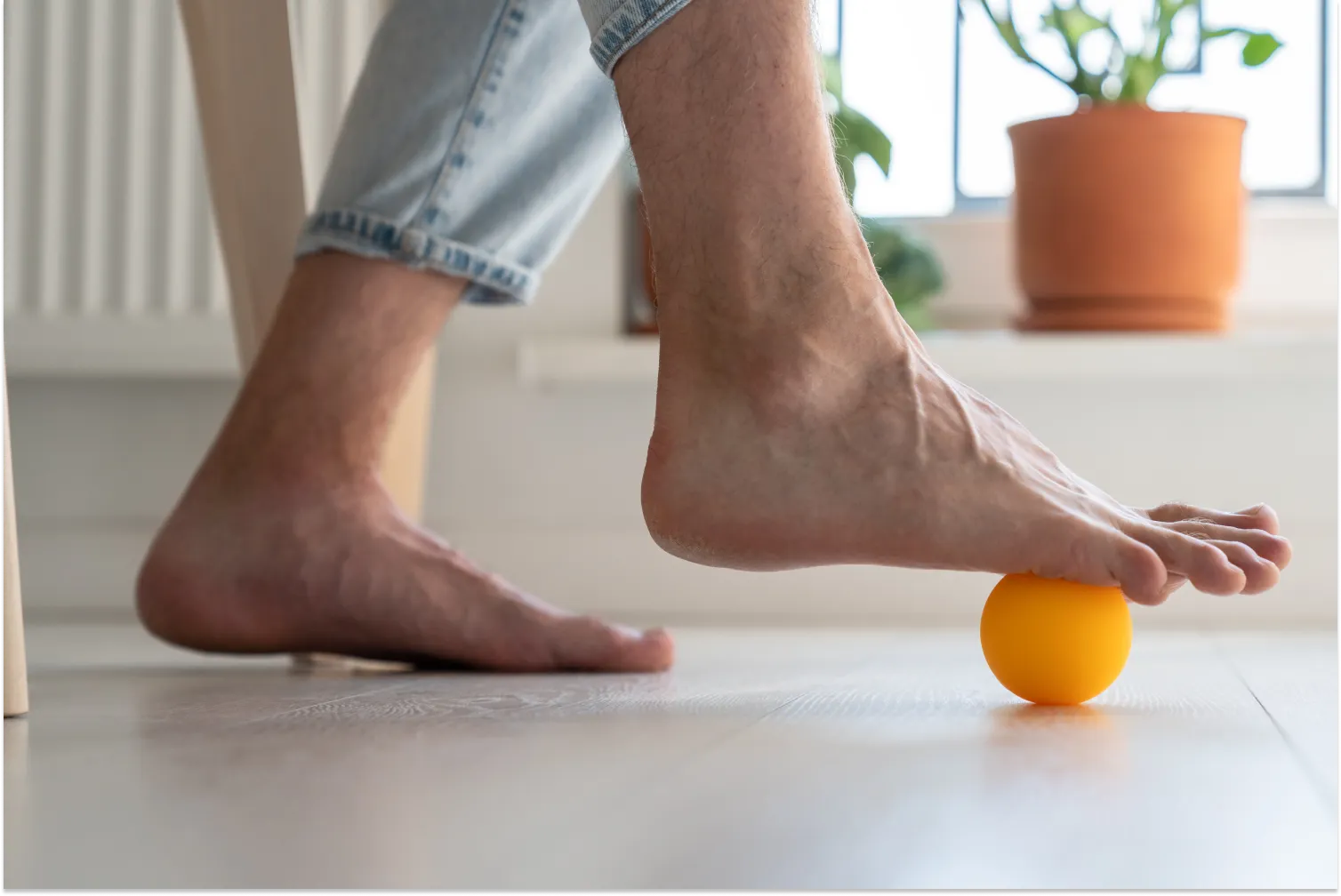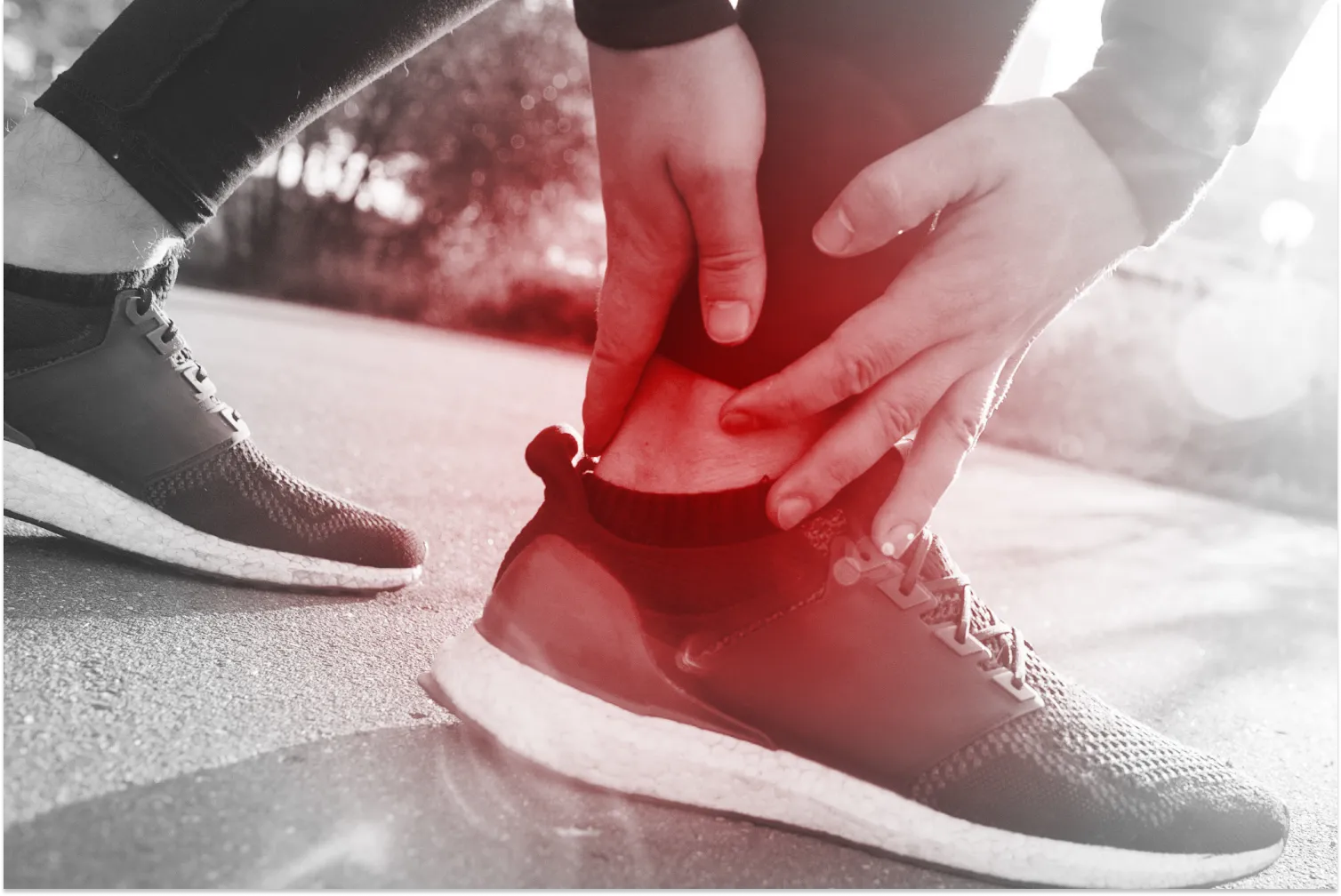Medically Reviewed By | Johannah Gregg, DNP FNP-C
Ankle injuries are an unfortunate yet common part of our active lives. From simple missteps on uneven grounds to rigorous athletic activities, the ankle is constantly at risk. While the terms “rolled” and “sprained” are often used interchangeably, understanding the nuanced difference between the two is paramount for appropriate care and speedy recovery.
We’re here to shed light on these two conditions, ensuring you're equipped with the knowledge to manage and mend effectively.
What Is the Structure of the Ankle?
The ankle is a complex hinge joint that acts as a meeting point for the tibia, fibula, and talus bones. This intricate assembly is stabilized by ligaments — strong bands of tissue that connect bones. The primary ligaments in the ankle include the deltoid ligament on the inside and the three lateral ligaments on the outside.
In addition to bones and ligaments, the ankle houses tendons that attach muscles to bones, aiding in movement. Given the weight-bearing and mobility responsibilities of the ankle, it's inherently vulnerable to stress and strain.
Recognizing its anatomy underscores the ankle's importance and helps one comprehend how injuries like rolls or sprains can happen.
What Is a Rolled Ankle?
A rolled ankle, often referred to as an "ankle roll," typically occurs when the foot lands unevenly on a surface, causing the ankle to twist or turn in an unnatural direction. This sudden, forceful movement can stretch or slightly tear the ligaments but not severely enough to be classified as a full sprain. Symptoms often include momentary pain, minor swelling, and possible tenderness when touched.
Do Rolled Ankles Heal on Their Own?
Though uncomfortable, most rolled ankles are benign and tend to heal on their own. Nevertheless, supporting blood flow can aid in recovery. The body's innate healing mechanisms respond to such minor injuries by increasing circulation to the affected area, delivering essential nutrients and oxygen.
What Is a Sprained Ankle?
A sprained ankle is a more severe manifestation of ligament damage than a rolled ankle. It happens when the ligaments are stretched beyond their limit, leading to tears. These tears can range from minor to complete ruptures and are graded from Grade I (mild) to Grade III (severe).
As with any injury, supporting blood flow aids in recovery. The body, recognizing the trauma, seeks to heal by flooding the area with blood, which can be maintained with technological interventions like Incrediwear. It’s also important to be able to differentiate between a sprained ankle and a twisted ankle, another common ankle ailment.
What Are the Symptoms of a Sprained Ankle?
Symptoms are more pronounced than with a rolled ankle. One may experience significant swelling, bruising, intense pain, and often difficulty in bearing weight on the affected foot. Pain management becomes paramount in these cases.
What Are the Key Differences Between Rolled and Sprained Ankles?
While both involve the ankle's ligaments, rolled and sprained ankles differ in the injury's severity and associated symptoms.
Causes
A rolled ankle results from a sudden twist or turn, often without significant force. However, a sprained ankle is due to a more substantial force pushing the ligaments beyond their elastic limit.
Symptoms
Rolled ankles typically present with mild pain, slight swelling, and tenderness. On the other hand, sprains are characterized by more intense pain, notable swelling, bruising, and sometimes an inability to bear weight.
Severity
Rolled ankles are essentially minor ligament stretches without significant tearing. Sprained ankles involve varying degrees of ligament tears, from minor to complete ruptures.
Recovery Time
Rolled ankles often heal faster, with individuals returning to normal activity within days. Depending on their severity, sprains may require weeks to months of rest and rehabilitation.
Treatment
While both initially benefit from the R.I.C.E (Rest, Ice, Compression, Elevation) protocol, sprains might need more intensive treatments, including physical therapy and immobilization.
What Is Incrediwear’s Role in Ankle Recovery?
The journey of recovering from ankle injuries is pivotal, and Incrediwear provides an innovative approach to aid this process. By harnessing the technology of semiconductor elements, Incrediwear products like the Ankle Sleeve stimulate the release of negative ions when activated by body heat.
This unique mechanism boosts cellular vibrations, supporting blood flow to the injured area — essential for both rolled and sprained ankles. Healthy circulation is vital for delivering oxygen and nutrients to the injury site, supporting the body's natural healing process.
Furthermore, it's worth reiterating that Incrediwear is not just another compression product; it focuses on circulation without physically pressing on the injured area, a crucial distinction for those recovering from ankle injuries.
What Are Best Practices for Ankle Injury Prevention and Recovery?
While accidents are sometimes inevitable, certain practices can minimize the risk of ankle injuries and optimize recovery. Some best practices for ankle injury prevention and recovery include:
-
Early Intervention: Immediately addressing discomfort can prevent further complications.
-
Proper Footwear: Shoes that offer stability can significantly reduce the risk of ankle twists.
-
Exercise: Strengthening ankle muscles through targeted exercises can offer better support.
- Utilizing Incrediwear Products: Support the natural healing process by maintaining healthy blood flow and soothing discomfort with Incrediwear's innovative technology.
Wrapping Up
Understanding the distinctions between a rolled and sprained ankle is fundamental to ensure effective treatment and swift recovery. Each injury requires specific attention, and with the innovative approach of Incrediwear, recovery is further supported.
Embracing preventative measures and informed responses to injuries will hasten healing and strengthen our resilience against future setbacks.
Sources:
What are ligaments? - InformedHealth.org | NCBI Bookshelf
Ligament: Anatomy, Function, Sprain | Cleveland Clinic
Orthopedics | Ligament Tears Causes & Symptoms | Beaumont Health
Rest, Ice, Compression, and Elevation (RICE) | My Health Alberta
Read more

Medically Reviewed By | Johannah Gregg, DNP FNP-C If you experience poor circulation in the feet, you’re likely all too familiar with the less-than-pleasant side effects of this condition. From a s...

Medically Reviewed By | Johannah Gregg, DNP FNP-C The knees are the largest joints in our bodies and comprise many small moving parts — bone, cartilage, muscle, and tendon. They are a central part ...






Leave a comment
All comments are moderated before being published.
This site is protected by hCaptcha and the hCaptcha Privacy Policy and Terms of Service apply.